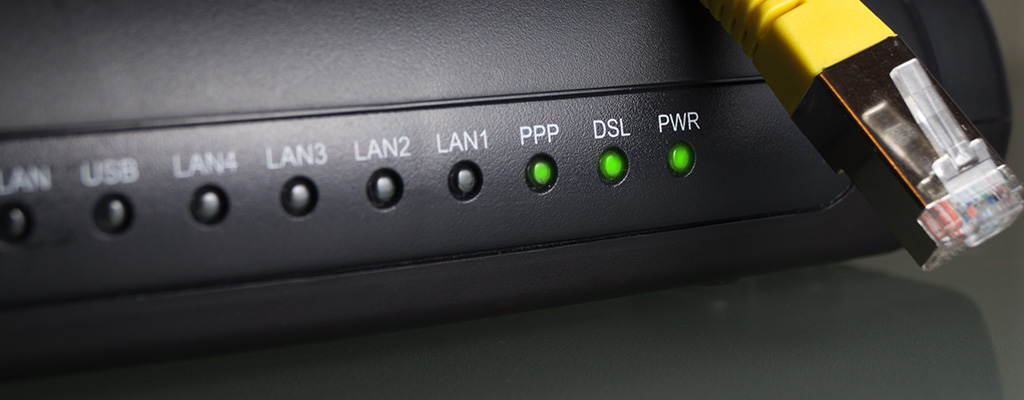

In June 2017, Linksys added a browser-based administration interface, joining the Netgear Orbi family as one of the few mesh-router systems to offer this. (Don't use the Linksys Connect app, which is for "dumber" Linksys routers.) The devices are not pre-paired with each other, and you need to install the iOS (opens in new tab) or Android Linksys app, which until recently was called the Smart Wi-Fi app. While it doesn't presume that you know anything about networking or Wi-Fi, the Velop setup process is tedious. This makes it better for a large home than the Luma, with its 65-foot range, but worse than the Netgear Orbi router and its 125-foot range. In an old, three-story, suburban house, a single Velop node stayed connected to an endpoint device for 90 feet. When the client laptop was moved even farther away, the Velop stayed strong, beating out the Orbi easily, but adding a second Velop satellite node cut the throughput in half. Percentages indicate change in data throughput between two sets. Second three tests add extensions to same configurations. *First three tests involve direct router-to-client communication, with client laptop moving to new rooms and floors. Two hops, 80 ft thru ceiling, 4 walls (A to B to C to D) One hop, 68 ft thru ceiling, 4 walls (A to B to D) One hop, 45 ft thru ceiling, 2 walls (A to B to C) That's a boost of 250 percent over the single-unit Velop score with the endpoints in the same locations, and roughly on a par with Orbi's 429.1Mbps, but much better than Google Wifi's 189.9Mbps. In the most complicated Purch Lab tests, a two-unit Velop system grabbed a signal sent 30 feet through two walls, then bounced it 15 feet up to the floor above, showing a throughput of 427.0 Mbps. But as a weaker device overall, the Google Wifi benefits from having more relays at medium distances, while the stronger Velop units may be interfering with each other. Unlike the Velop or the Orbi, the Google Wifi has to split its bandwidth between backhaul communications and communications to client devices. Percentages indicate change from line-of-sight tests at same distances without extensions.īy contrast, a single relay decreased the Google Wifi's throughput, but two relays nearly tripled it. *Extensions placed every 50 feet between router and endpoint. Single-Line Extension Hop Test (in Mbps)* That's slightly off the Orbi's top average speed, which was 552.1 Mbps at 5 feet. In Purch Labs' real-world testing with IxChariot software, a single Velop unit, acting as a router, pushed an average throughput of 527.1 Mbps at 15 feet from our laptop. MORE: Best Wi-Fi Routers Linksys Velop review: Performance Not all mesh-router systems support MU-MIMO, which can make a noticeable difference with new laptops and smartphones.Īnd thanks to new Linksys routers offering mesh compatibility, you can expand the mesh coverage by adding a standalone router like the Linksys Max-Stream MR8300 instead of a Velop satellite unit. (The three Wi-Fi networks all have the same SSID and will be viewed as a single network by client devices.) You can link up to 10 Velop devices to cover an enormous home.Įach Velop unit uses MU-MIMO (multiuser, multiple input, multiple output) technology to deliver concurrent streams of data to several clients at once. Inside, each Velop unit has six antennas, two for each network, as well as a Bluetooth radio used for configuring the system. They are fed with data from the host router via a Qualcomm QCA 9886 chip. However, there are no USB ports, so connecting a local printer is out.Įach Velop system is based on the Qualcomm IPQ4019 Wi-Fi control chip and radio and has a 710-MHz quad-core ARM-based processor, 512MB of RAM and 4GB of solid-state storage space. All the other Ethernet ports on the devices can connect to a networked appliance (such as a storage drive) or to other Velop devices. On the unit acting as the router, one of the Ethernet ports connects with the broadband modem. On the bottom of each Velop unit, you'll find a power connection, an on-off switch, a reset button and a pair of gigabit Ethernet ports. (You can use Ethernet for the Velop backhaul (opens in new tab) instead, freeing up even more wireless bandwidth, if you have enough cable.) Whereas the Orbi's backhaul (communication between router nodes) is fixed to one of the 5-GHz bands, the Velop dynamically switches the backhaul between the two 5-GHz bands to optimize connection speeds. Like the Orbi system, which it resembles in many ways, the Velop system has a tri-band design, creating a single 2.4-GHz network and a pair of 5-GHz networks on different sections of the bandwidth range. The LED turns yellow when the unit has lost contact and red when there's no internet connection.

Each Velop tower has a single LED on top that unobtrusively glows blue when everything is working properly.


 0 kommentar(er)
0 kommentar(er)
